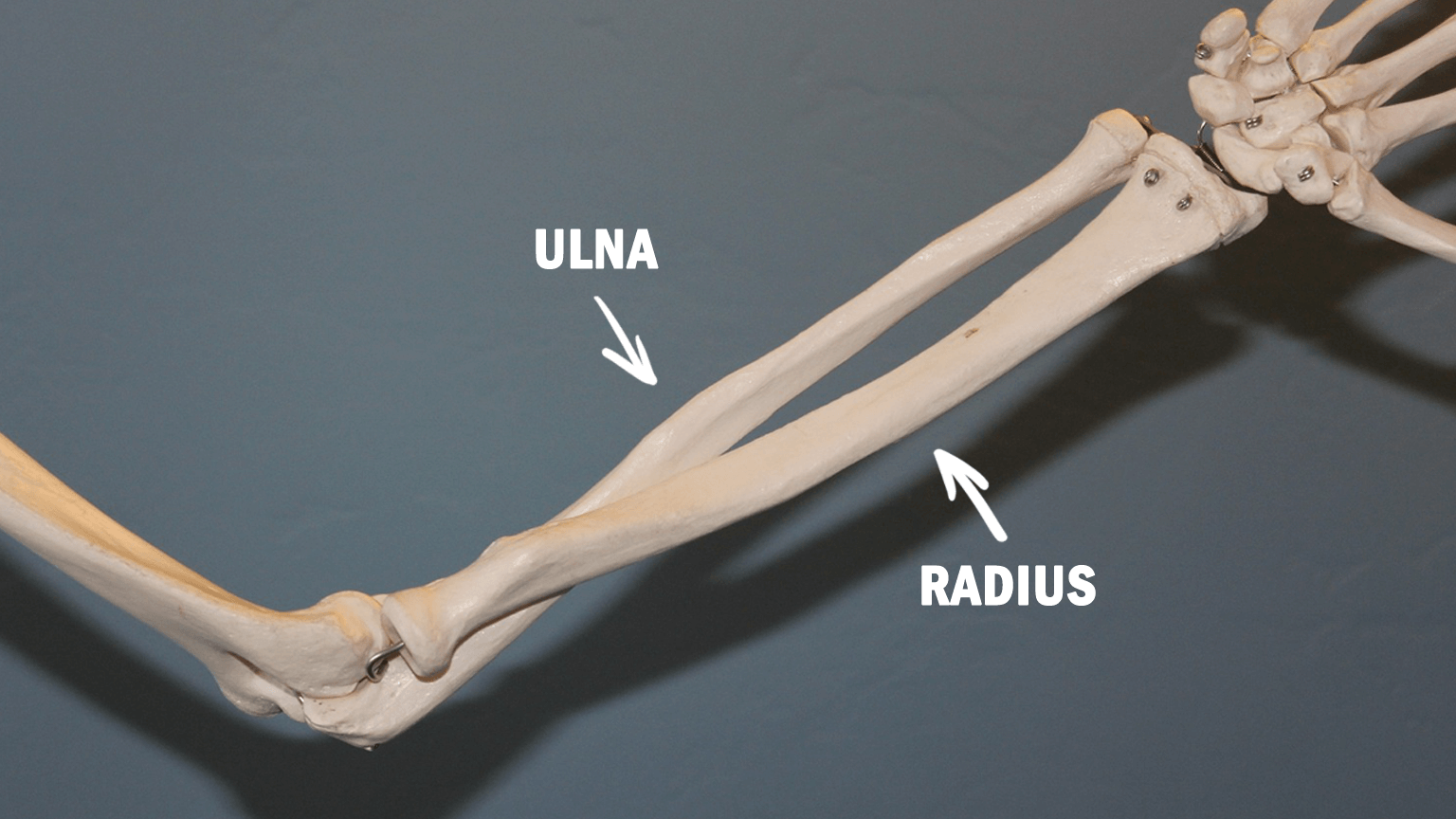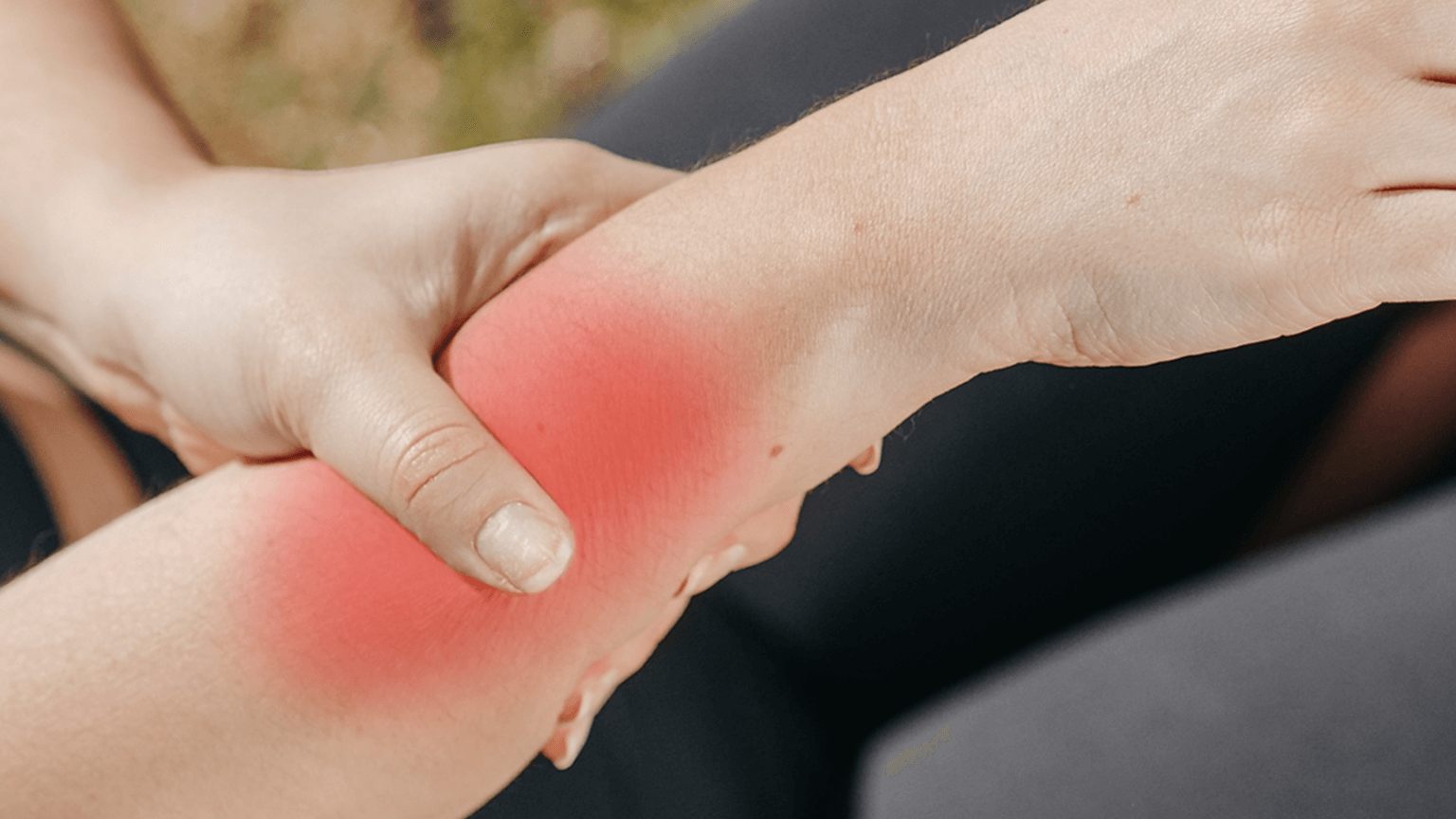Introduction
Forearm pain can be an incredibly uncomfortable and, in some cases, can even be a debilitating condition. The forearm muscles are used in most daily activities involving the arms, from washing the dishes to lifting objects. Loss of forearm function can be extremely frustrating and given the frequency these muscles are used in activities of daily living, it can often be difficult to get adequate rest. In order to fully understand the cause(s) of forearm pain, it is first necessary to have some appreciation of the musculoskeletal anatomy of this area.
Anatomy of the forearm
The forearm consists of two bones, the radius and ulna. The muscles on the dorsal aspect (those on the same side as the knuckles) of the forearm are referred to as the ‘extensor muscle group’ whereas the muscles on the volar aspect of the forearm (those on the same side as the palm of the hand) are termed the ‘flexor muscle group’.
The forearm is capable of flexion, extension and rotation movements. Some of the tendons responsible for forearm movement span across two joints (i.e. the wrist and elbow).
The muscles and tendons of the forearm are key to movement; therefore, any injury, discomfort or pain can limit range of motion.

Causes of forearm pain
There are a number of conditions which can lead to forearm pain and it is beyond the scope of this article to list them all. However, some of the most common causes include:
Musculoskeletal factors – Repetitive strain, which may occur during tasks such as writing, typing, and other activities involving repeated forearm/wrist movement is a common cause. Repetitive strain can lead to swelling of muscles and sometimes myofascial tightness, which in turn causes pain or even nerve entrapment. This may result in a decreased functioning of the forearms and hands, or pain during wrist movements.
Traumatic factors – Any impact, direct or indirect, can cause damage to the components of the forearms. An injury, such as a fall or a direct blow can often lead to forearm pain, sometimes accompanied by a tendon tear or even bony deformity. If the injury is severe, the pain can become more of a long-term and chronic issue, especially if the appropriate treatments were not sought in the first instance.
Carpal Tunnel Syndrome (CTS) – Also known as median nerve entrapment or compression, this occurs when the median nerve, which passes through a narrow region in the wrist (called the ‘Carpal Tunnel’), becomes compressed. This usually happens when repetitive wrist movements are performed, leading to inflammation of the nerve, muscles and tendons within the Carpal Tunnel. Additionally, conditions such as diabetes, thyroid disorders, rheumatoid arthritis, pregnancy, and other inflammatory conditions have also been linked to the development of CTS.
Tennis Elbow (Lateral Epicondylitis) – Repetitive movements involving the elbow or wrist, especially wrist extension, can lead to the tendons at the attachment site of the humerus becoming inflamed. This causes tenderness and pain on the outer side of the forearm. This condition, also known as lateral epicondylitis, is prevalent in occupations involving manual labour, but can also occur in sports or daily tasks where repetitive wrist extension is required (e.g. typing, lifting or carrying heavy bags).
Golfer’s Elbow (Medial Epicondylitis) – Overuse or strain of the tendons attached to the inside of the elbow; also known as the flexor tendons, can often lead to forearm pain. Repeated wrist flexion and any activities which include repetitive rotation of the forearm or wrist are frequently the cause of this condition.
Ulnar Nerve Entrapment Syndrome – Also known as ‘Cubital Tunnel Syndrome’, is responsible for the compression and subsequent inflammation of the ulnar nerve, which passes behind the elbow to the wrist. This can result in numbness and tingling in the ring and little finger.
Cervical Radiculopathy – A compressed nerve in the lower cervical spine (neck) can lead to a variety of issues, such as pain, stiffness, tingling and even weakness along the arm and hand. This can happen due to poor posture, disc herniations or arthritic spurs from cervical spondylosis/degeneration. Everyday tasks become difficult to perform, as both motor and sensory nerves are affected, resulting in decreased muscle strength in the forearms, and pain that can become chronic.
Less common causes of forearm pain can include but are not limited to, Radial Tunnel Syndrome (entrapment of branches of the radial nerve), Anterior Interosseus Nerve Syndrome, Pronator Syndrome (the latter two involve compression of the median nerve) and Intersection Syndrome.

How is forearm pain diagnosed?
Sometimes, forearm pain can be difficult to diagnose due to the vast array of tendons and nerves involved. Referred pain from the cervical or shoulder region can also be responsible for forearm pain, making a precise diagnosis difficult.
The clinical therapist will often run through a comprehensive exam and order any imaging that is necessary. The examination typically involves checking the different range of movements in the elbow and shoulder, palpation, and more specific pain provocative tests.
In some cases, an X-ray, MRI scan, ultrasound scan, or even nerve conduction tests may be required.
Treatment options
Treatment for forearm pain varies according to the cause.
Often RICE (rest, ice, compression and elevation) therapy can work well, while over-the-counter painkillers/analgesics (e.g. paracetamol) and anti-inflammatory medication (e.g. ibuprofen) may be used if it is deemed necessary by a doctor.
In many cases, massage therapy, stretching and mobilisation of forearm muscles and nerves can help greatly. Deep tissue massage including myofascial release techniques, neuromuscular therapy, trigger point therapy, and isolated stretching are the techniques employed by therapists to relieve pain and restore movement.
In cases like tennis elbow, dry needling, done at specific trigger points, is an effective mode of treatment. Nerve mobilisation and muscle energy techniques can also help to improve the range of motion. Dry needling can also be very effective in treating pain from nerve entrapment between muscles, as it helps interrupt the pain signal pathways and break the pain cycle.
Conclusion
Forearm pain can be a debilitating condition because it hinders everyday activities involving the upper extremities, making even small tasks feel difficult to perform. However, timely intervention and treatment by a qualified therapist can reduce the risk that the condition will become chronic.
For those interested in learning more about forearm pain or the treatment of other injuries related to repetitive strain, completing a qualification in sports massage may be an appropriate pathway to take. We offer a number of accredited qualifications ranging from entry-level to more advanced courses where you’ll initially learn about symptoms, causes and treatment of strain-related injuries, followed by an in-depth look at massage and stretching treatments focused on alleviating the pain associated with these conditions.

